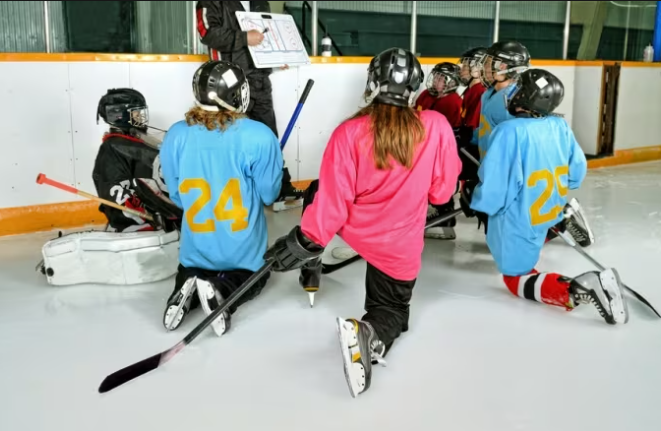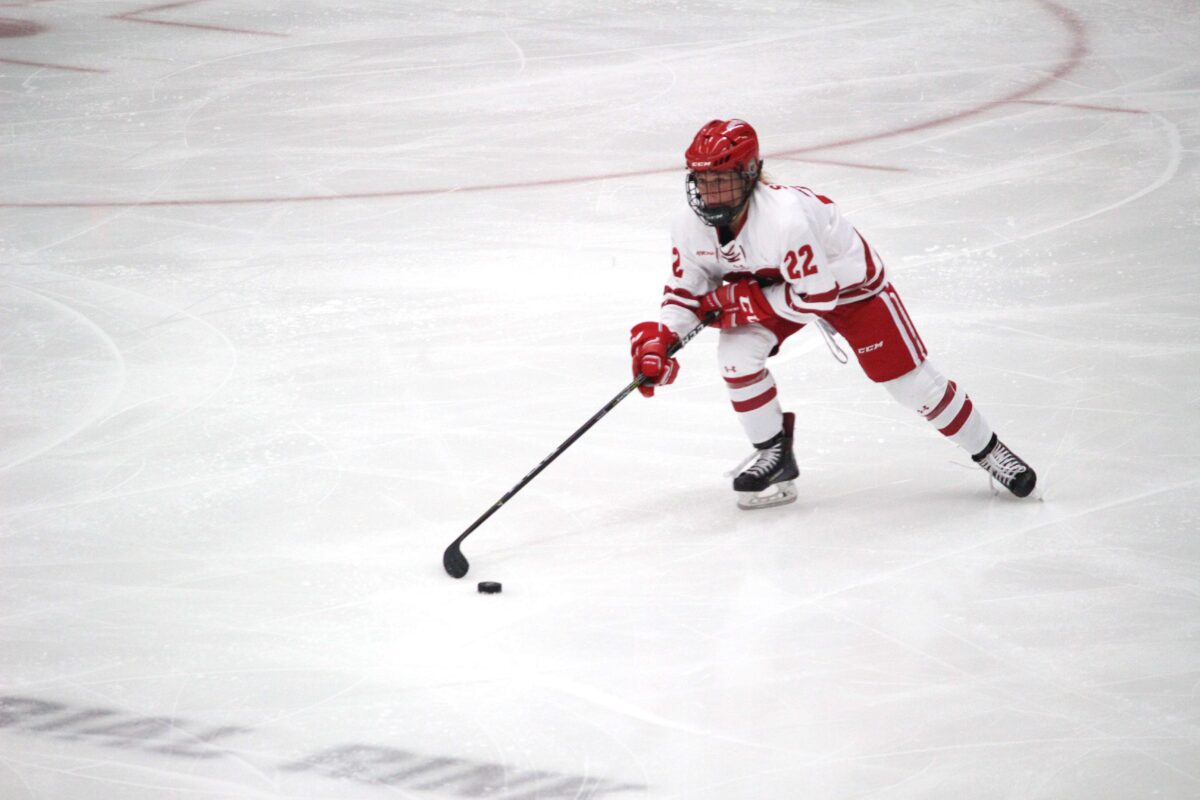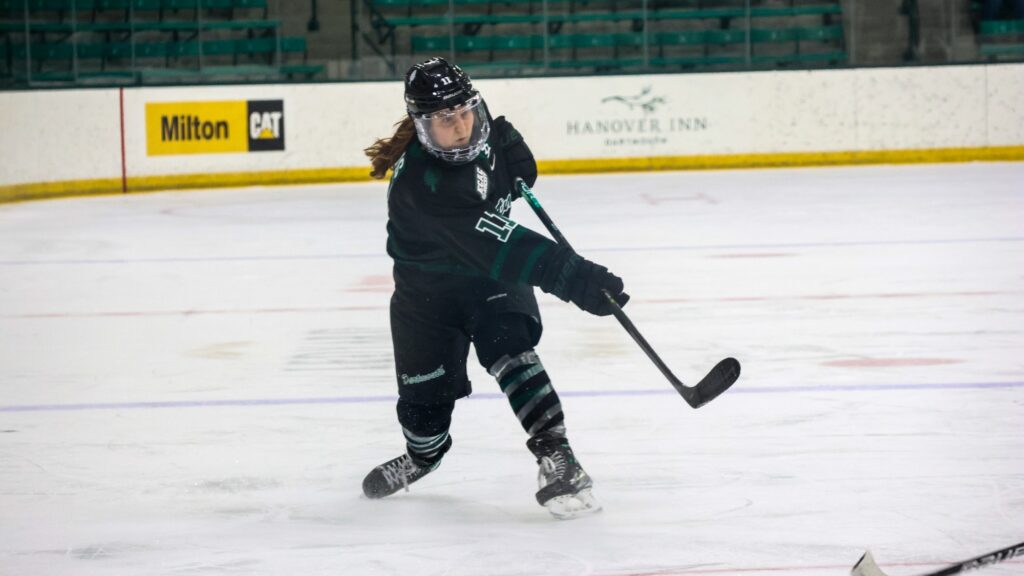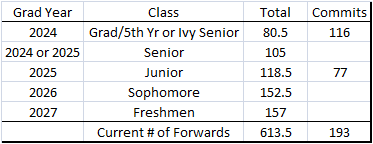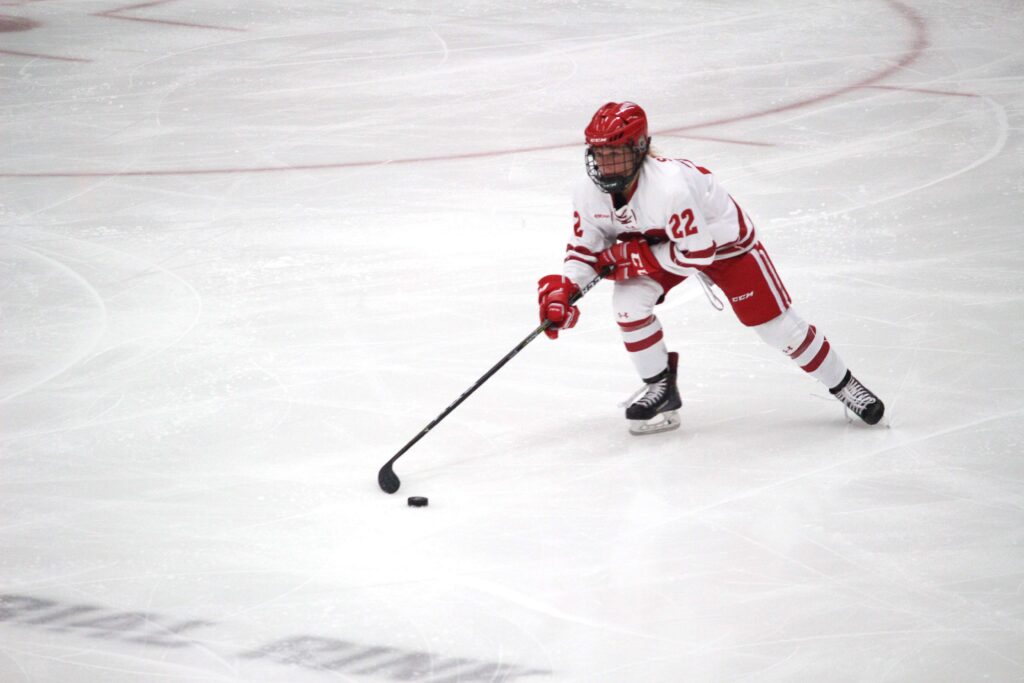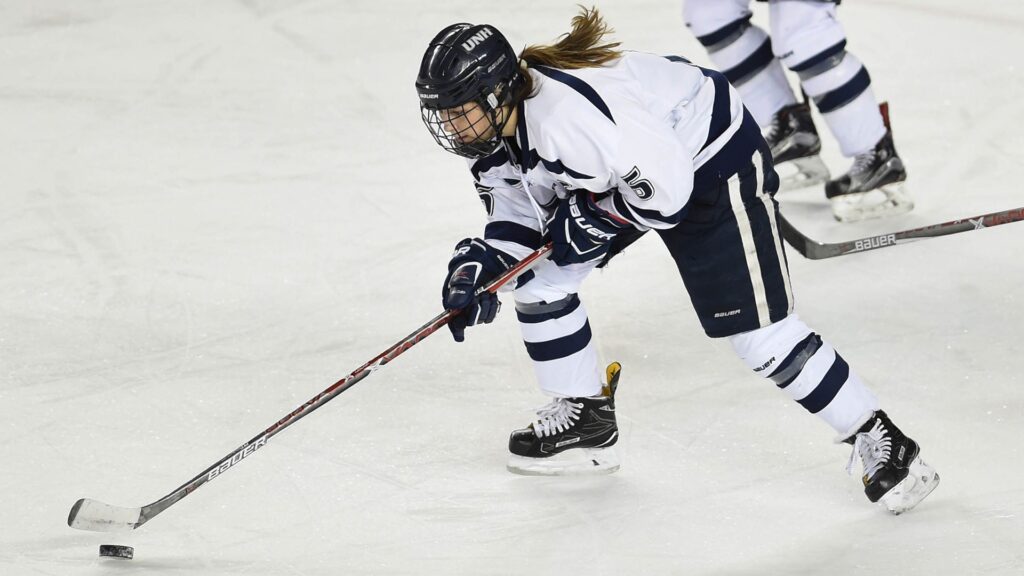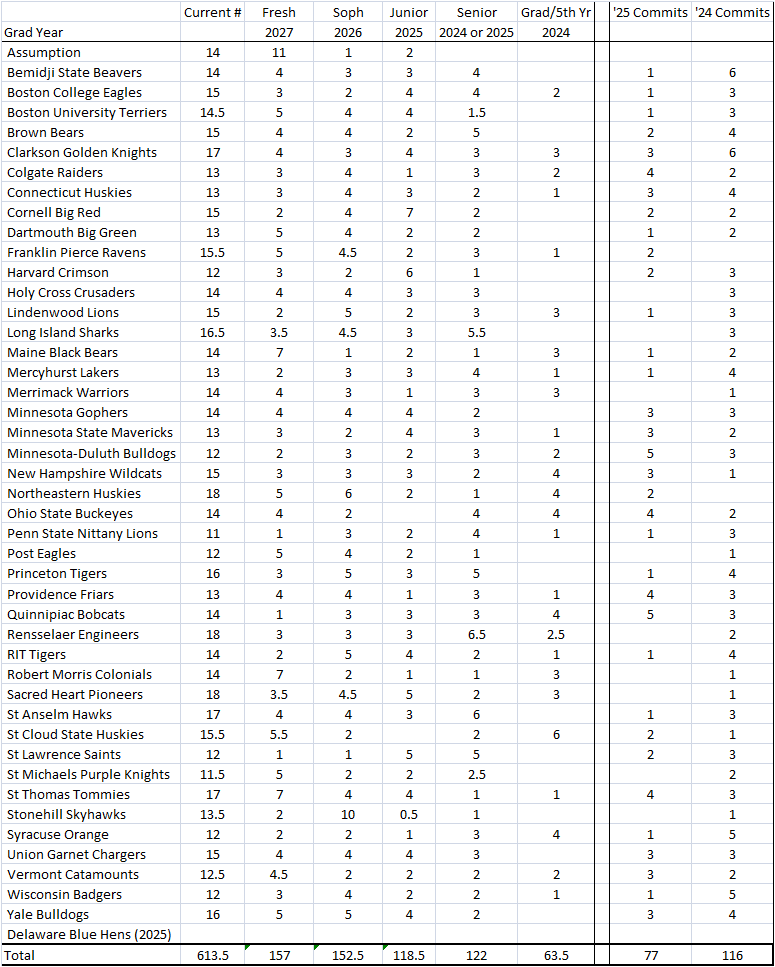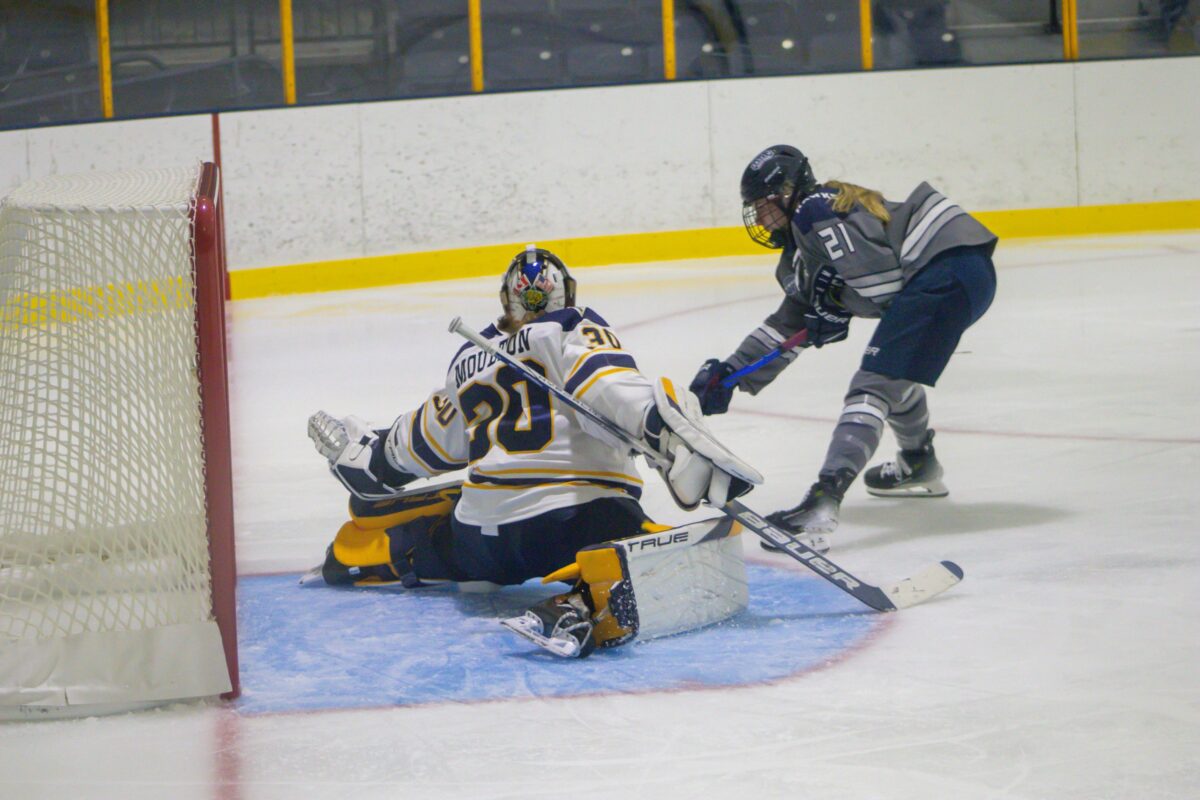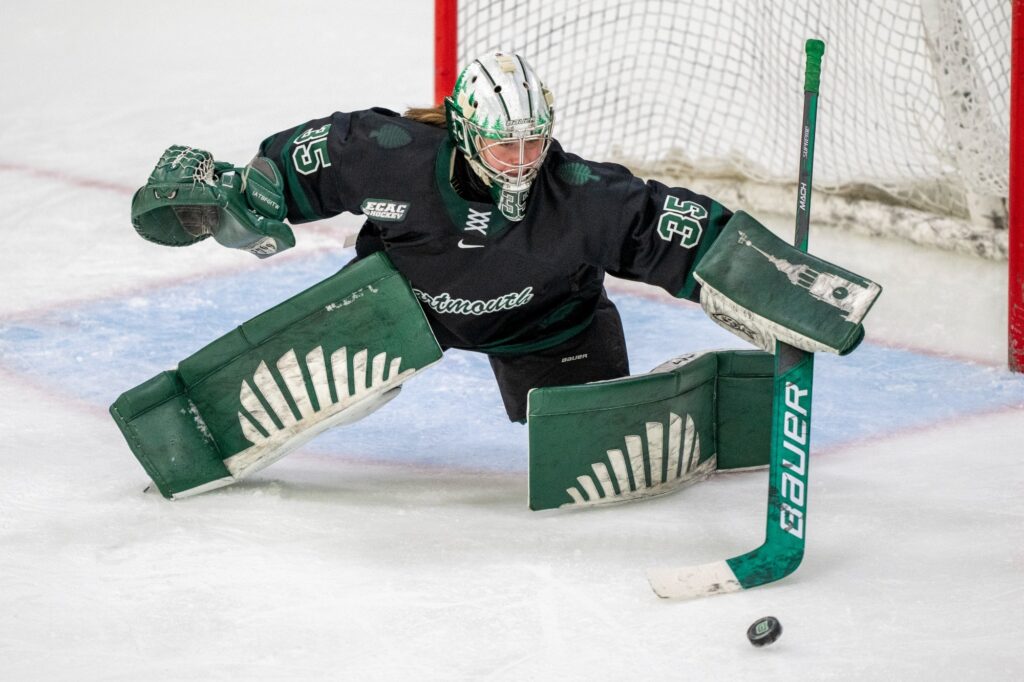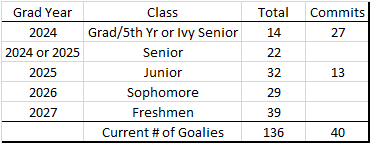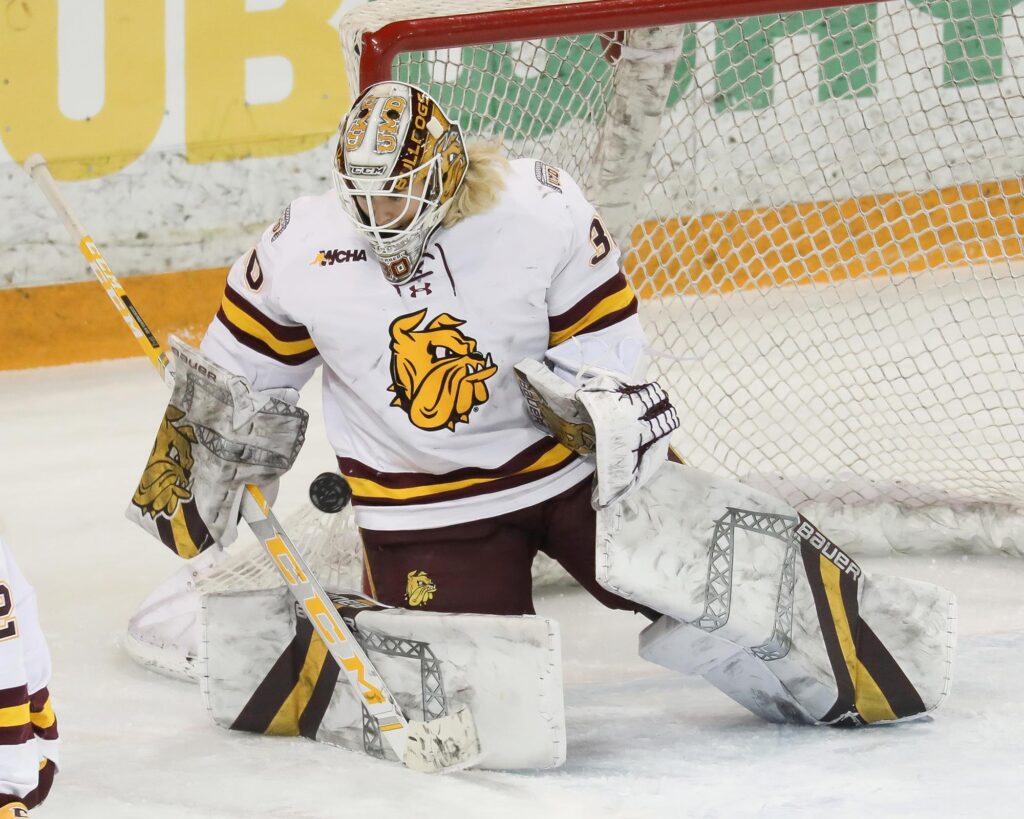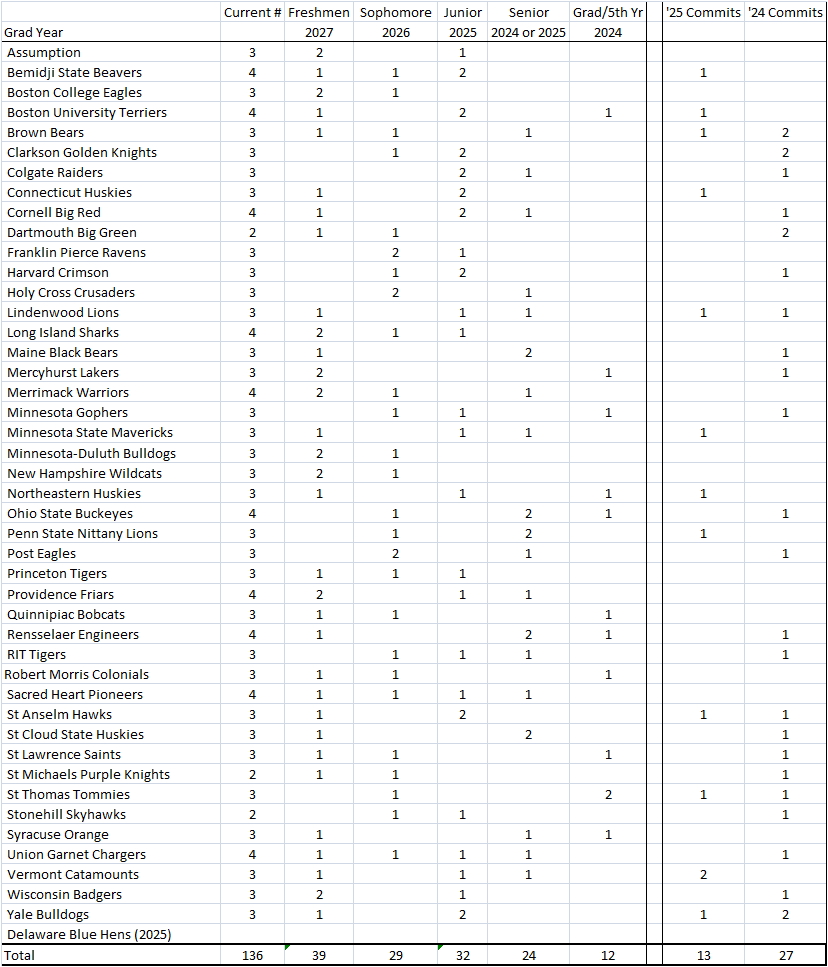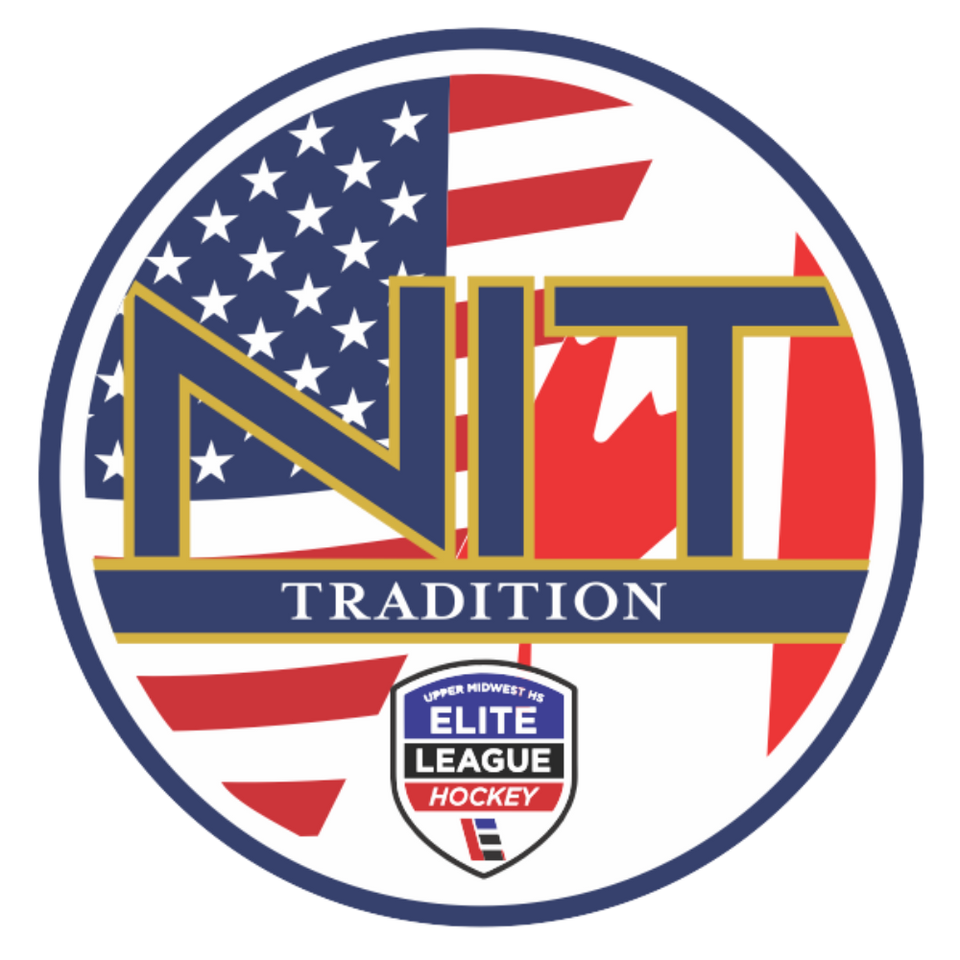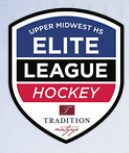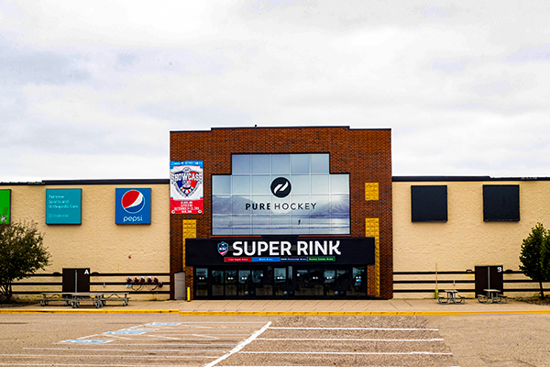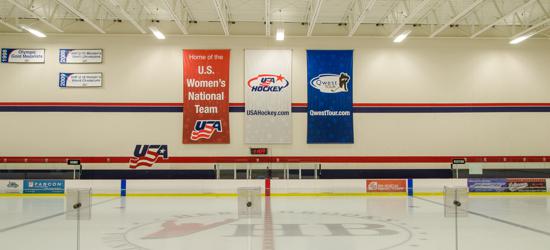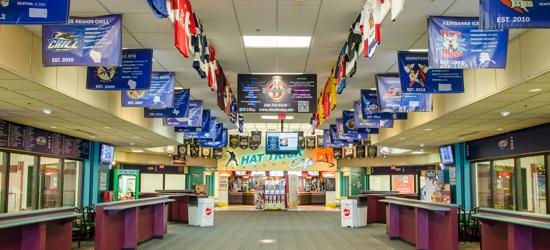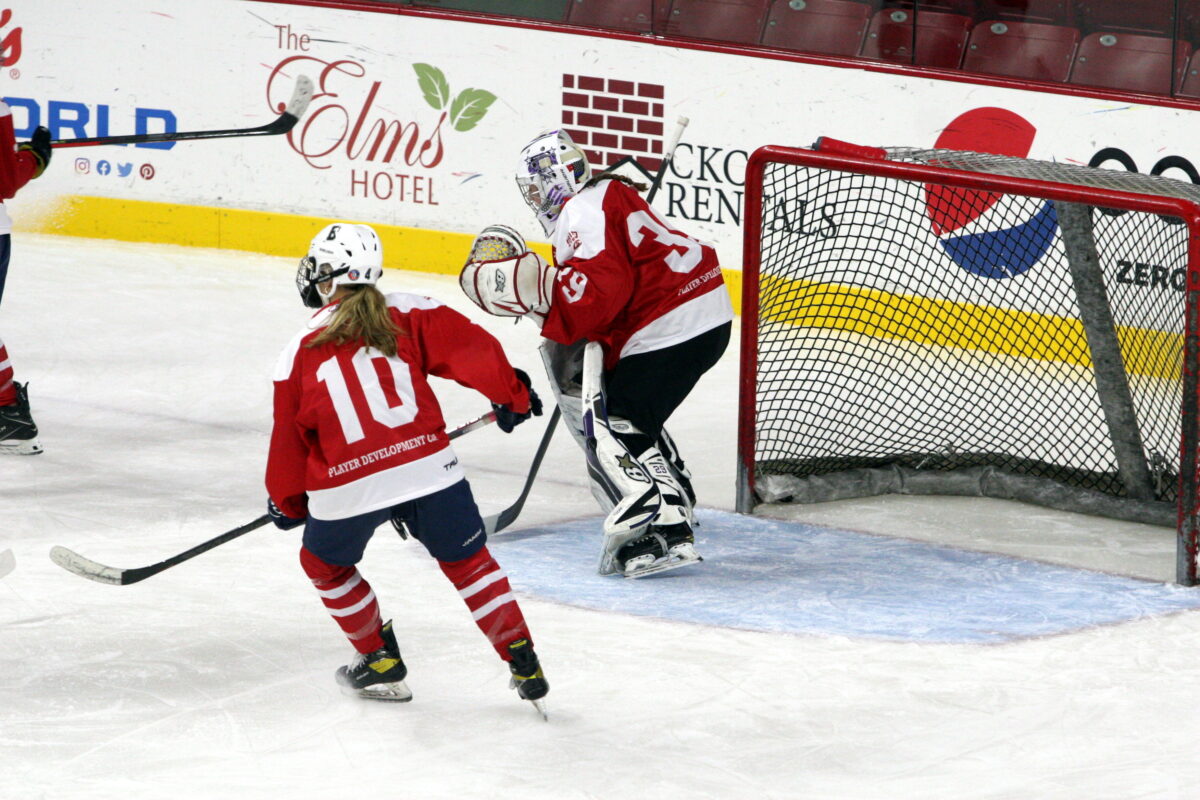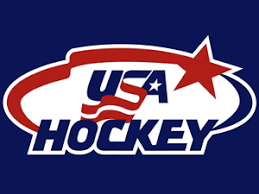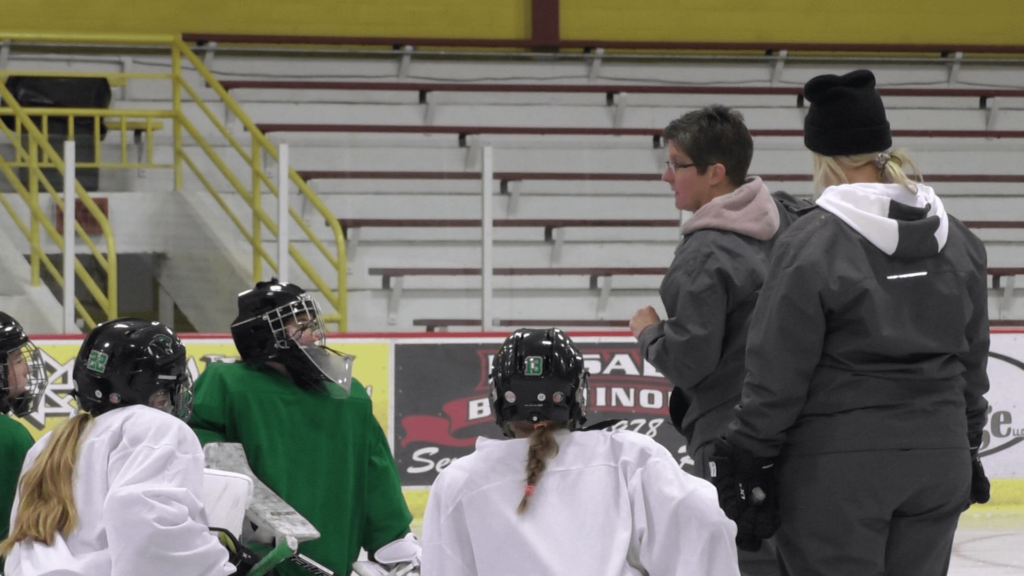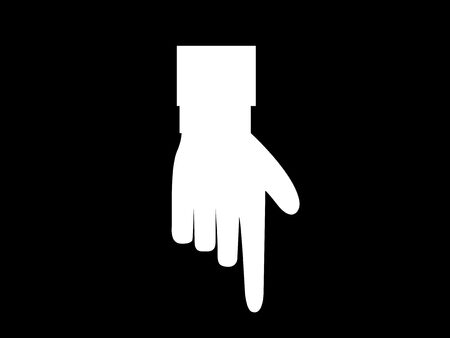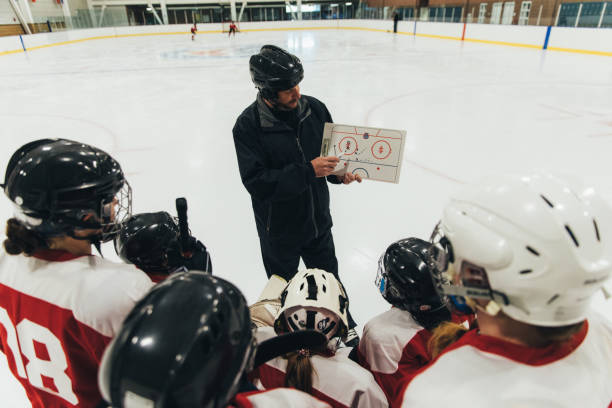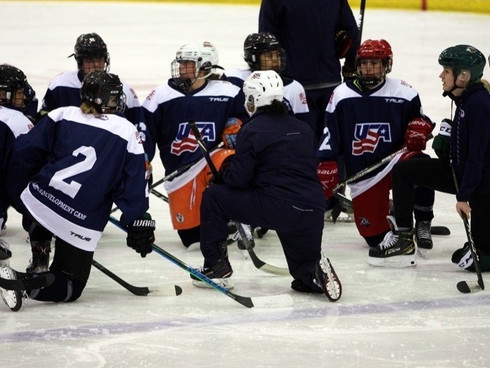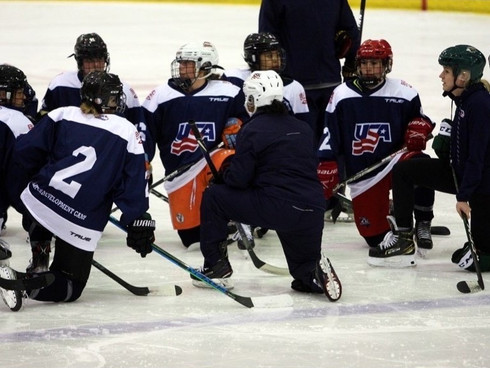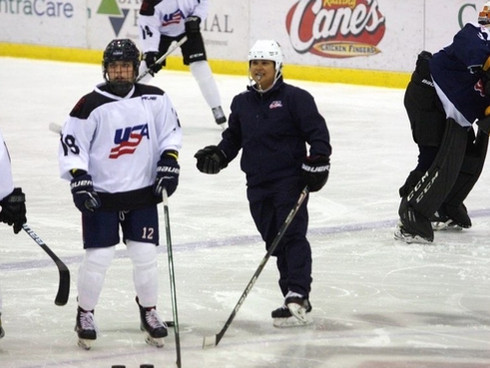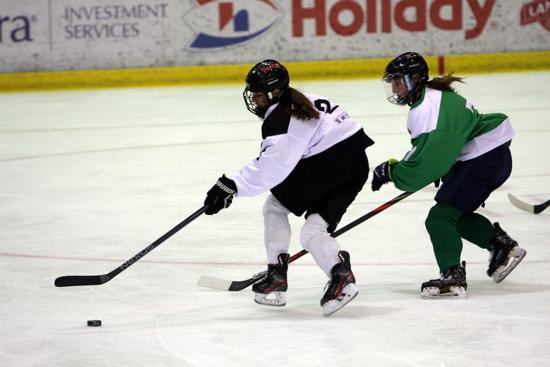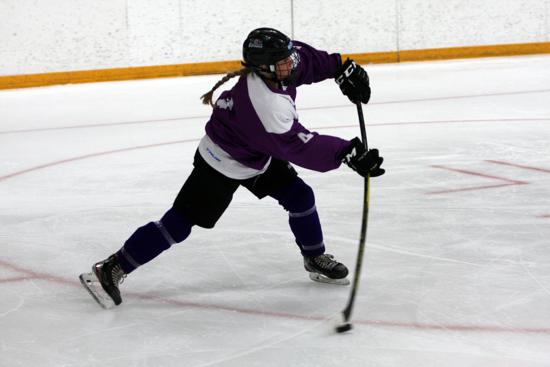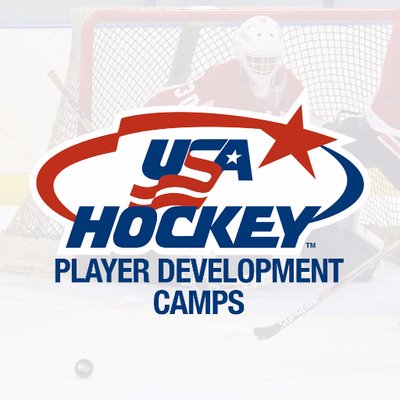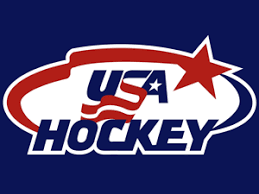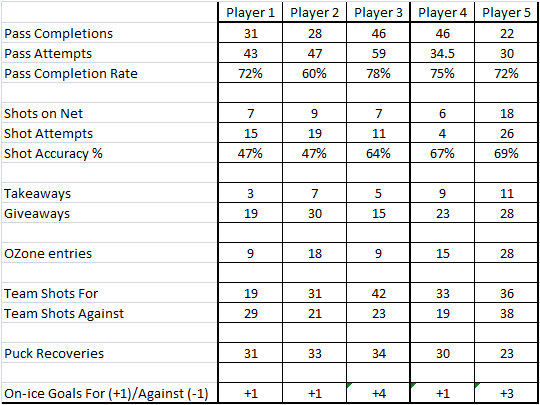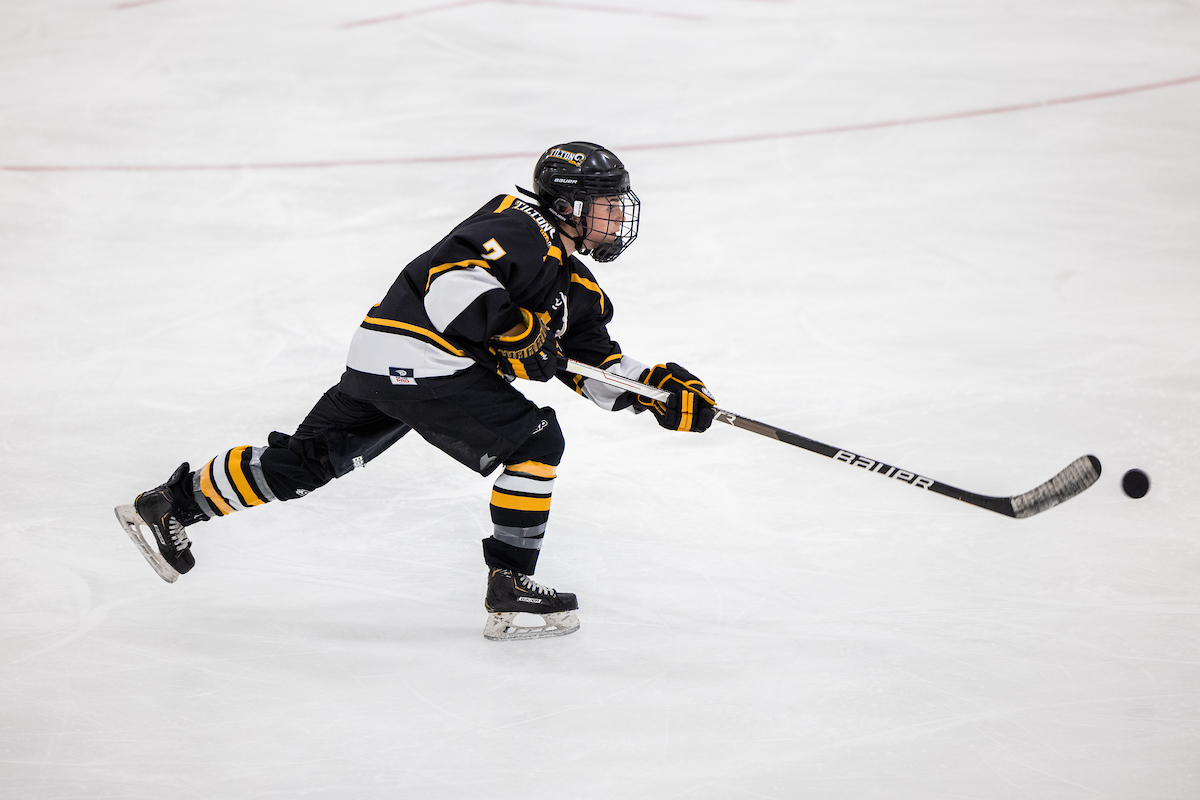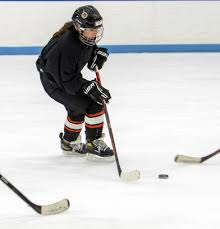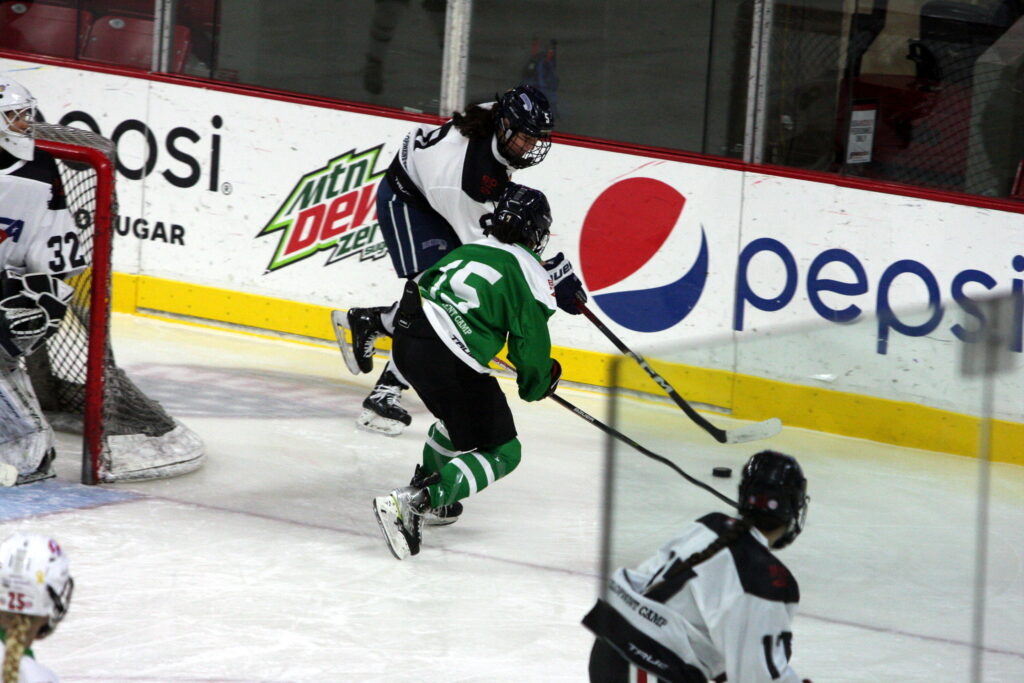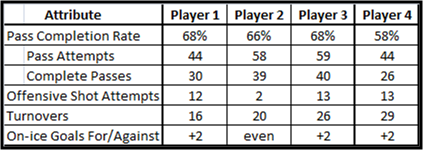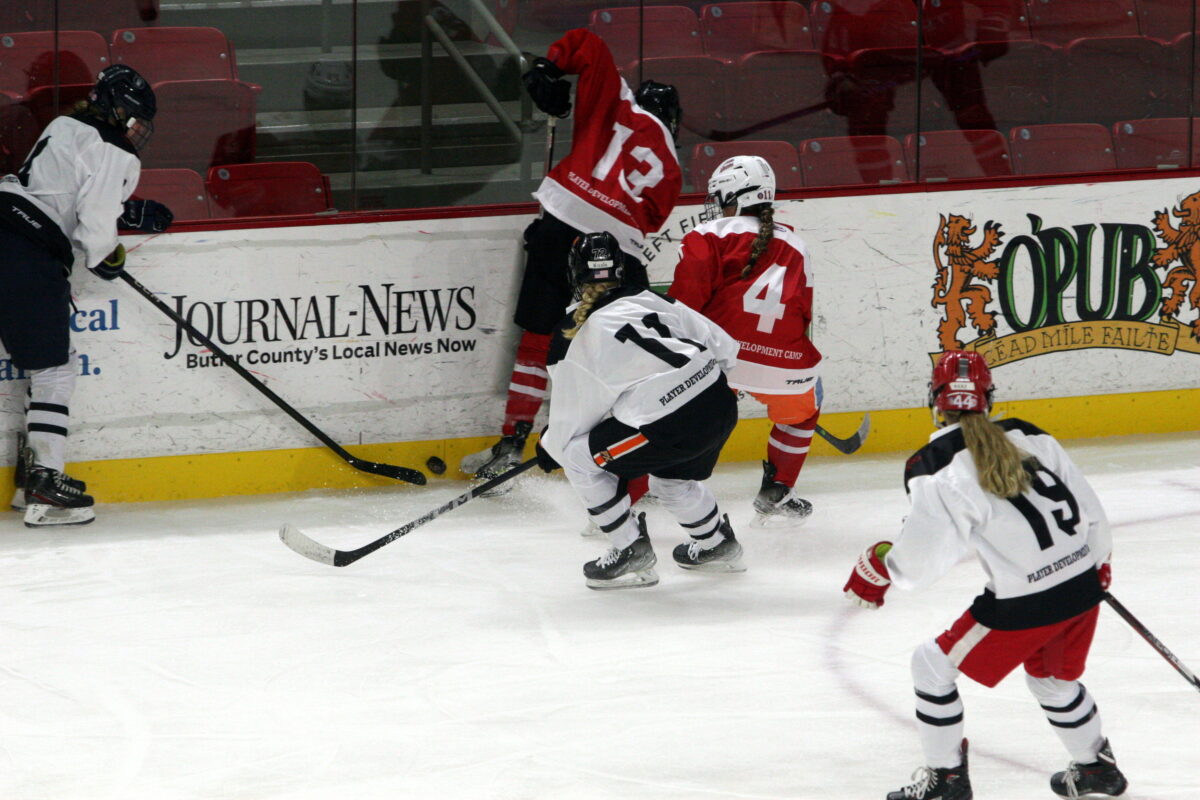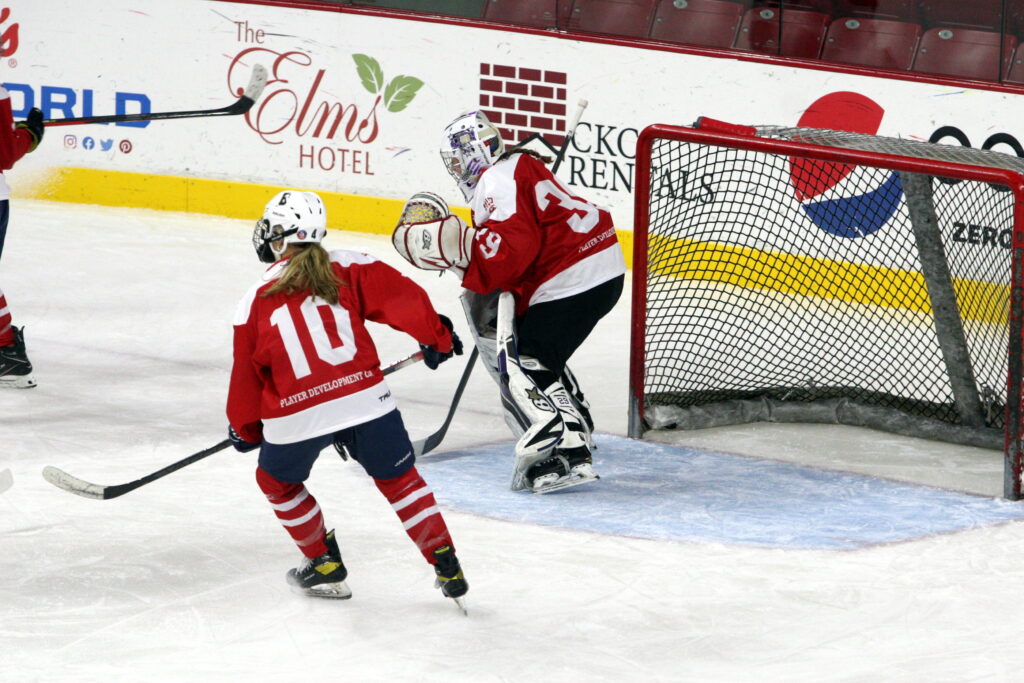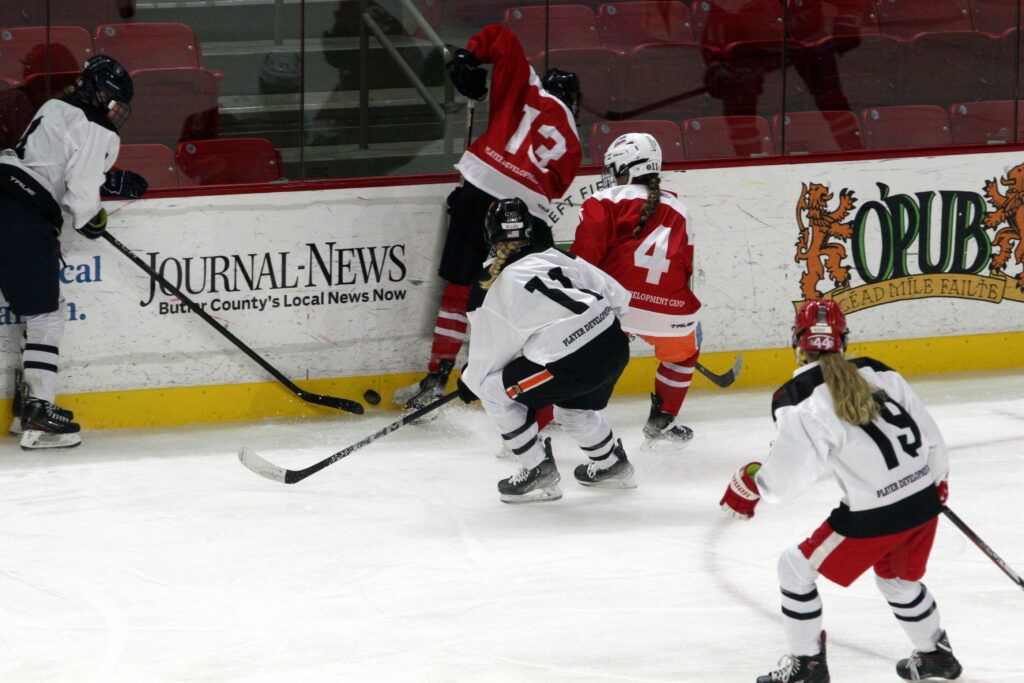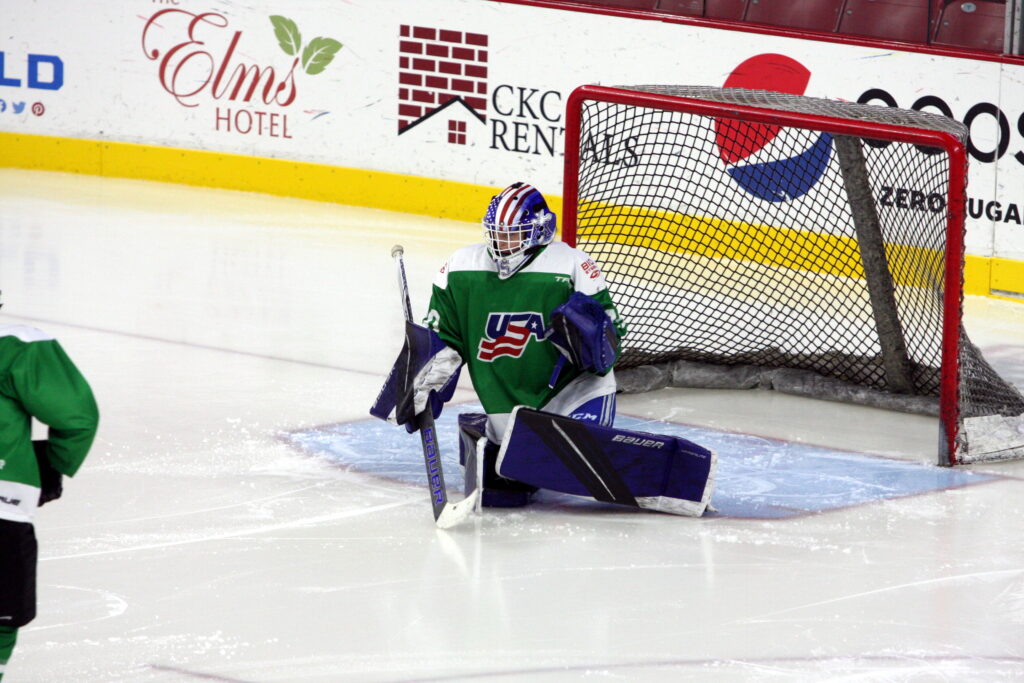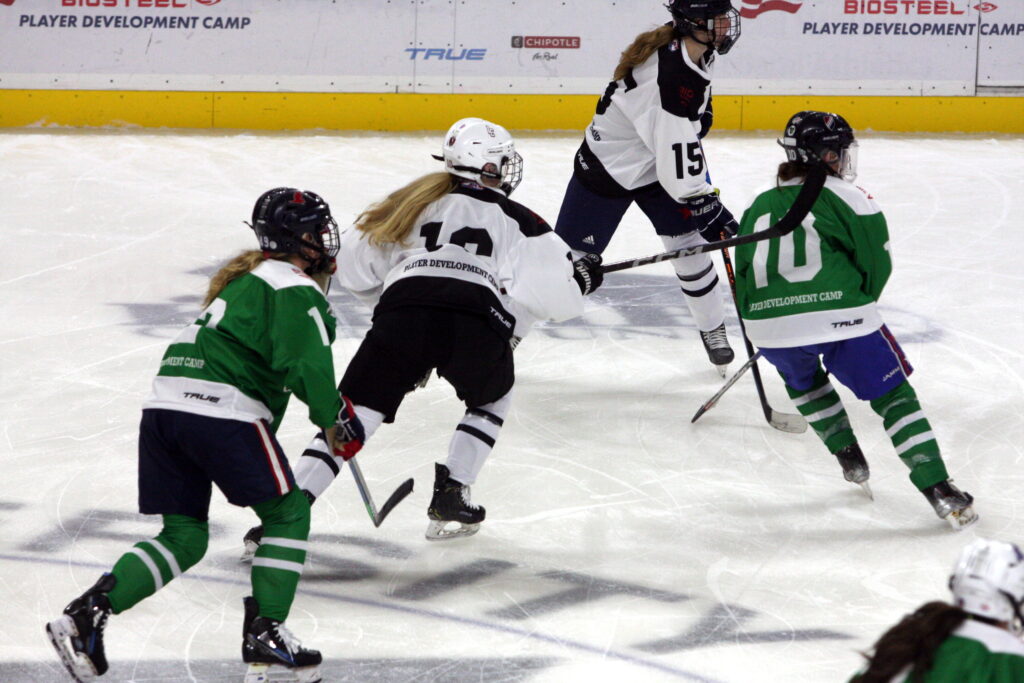2024 Girls Hockey Event Calendar
Here is a list of 2024 Girls Hockey Tournaments, Showcases, Development Camps and Summer Camps.
This is a partial list. Feel free to submit a new event using our Feedback Form
| Organization | Event | Start Date | End Date | Location | City | Ages |
|---|---|---|---|---|---|---|
| 200x85 Tournaments | CCM MLK Girls | 1/14/2024 | 1/16/2024 | Massachusetts | 12U - 19U AAA/AA | |
| Premier Ice Prospects | Great Lakes Girls Fest | 2/2/2024 | 2/4/2024 | Detroit, MI | 19U through 10U Tier II | |
| Premier Ice Prospects | Motor City Girls Fest | 2/2/2024 | 2/4/2024 | Detroit, MI | 19U through 10U Tier I | |
| JWHL | Challenge Cup 2024 | 2/17/2024 | 2/20/2024 | Rockville/Arlington, VA | 14U, 16U, 19U | |
| OneHockey | OneHockey Connecticut GIRLS | 3/8/2024 | 3/10/2024 | DANBURY ICE | Danbury, CT | Girls Tier II (AA) 19U, 16U, 14U, 12U, 10U Girls Tier III (A) 19U, 16U, 14U, 12U, 10U |
| Pony Tail Tournament | Pony Tail Tournament | 3/15/2024 | 3/17/2024 | Baltimore, MD | U10, U12A, U12B, U14A, U14B, U16A, U16B, U19 | |
| OS Hockey | 2024 OS SPRING FESTIVAL | 3/16/2024 | 3/19/2024 | Braemar Arena | MInneapolis, MN | |
| St Cloud State University | St. Cloud State Women's Hockey Camps | 3/29/2024 | 3/30/2024 | Herb Brooks National Hockey Center | St. Cloud, Minnesota | Ages 6-16 |
| RINK Hockey Academy Kelowna | Female University Showcase 2024 | 4/4/2024 | 4/7/2024 | Winfield Arena & RINK Kelowna Training Centre | Kelowna, BC | 2005-2009 YOB |
| Delta Hockey Academy | DHA Female University Showcase | 4/9/2024 | 4/10/2024 | Planet Ice | Delta, B.C | 2006-2011 YOB |
| College Hockey Showcases | Spring Break Showcase | 4/13/2024 | 5/15/2024 | Fort Meyers, FL | 2004-2010 Birth Years | |
| The Rose Series | Cowgirl Shootout | 4/18/2024 | 4/21/2024 | Nashville, TN | 2012 Birth Years | |
| Showcase Hockey | 2024 Minnesota Meltdown AAA Tournament | 4/19/2024 | 4/21/2024 | Minnesota | Girls AAA (10U, 12U, 14U, 16U, 19U) | |
| 200x85 Tournaments | CCM CHI-TOWN SHUFFLE | 4/19/2024 | 4/21/2024 | Chicago, IL | Girls Tier 1/Tier 2 (12U, 14U, 16U, 19U) | |
| RINK Hockey Academy Winnipeg | Female University Showcase 2024 | 4/19/2024 | 4/21/2024 | Rink Training Center | Winnipeg, MB | 2005-2009 (2010) YOB |
| Premier Ice Prospects | Hockey Hall of Fame Future Legends | 4/24/2024 | 4/27/2024 | Toronto, ON | 2012 Birth Years | |
| RUSH Hockey | Rush Spring Showcase (Florida) | 4/26/2024 | 4/28/2024 | Palm Beach Skate Zone | West Palm Beach, FL | 2004-2012 Birth Years |
| Premier Ice Prospects | PIPs American Dream | 5/3/2024 | 5/5/2024 | American Dream | East Rutherford, NJ | 2010- 2013 Birth Years |
| Premier Ice Prospects | CCM Selects Training Camp - Notre Dame (Girls) | 5/3/2024 | 5/5/2024 | South Bend, IN | 2010-2016 | |
| OS Hockey | 2024 WHITECAPS CUP (HS) | 5/3/2024 | 5/5/2024 | MInneapolis, MN | High School | |
| Premier Ice Prospects | Premier Prospects Boston | 5/8/2024 | 5/10/2024 | The Edge Sports Center | Boston, MA | 2009-2010 Birth Years |
| Premier Ice Prospects | Premier Prep Prospects | 5/9/2024 | 5/12/2024 | The Edge Sports Center | Boston, MA | 2009-2012 Birth Years |
| The Rose Series | Low Country Classic | 5/9/2024 | 5/12/2024 | Charleston, SC | 2011 Birth Year | |
| The Rose Series | The Battle at the Beach | 5/9/2024 | 5/12/2024 | Fort Meyers, FL | 2010 Birth Year | |
| Premier Ice Prospects | Top Prospects | 5/17/2024 | 5/19/2024 | Jacksonville, FL | 2010 - 2013 Birth Year | |
| Showcase Hockey | 2024 Independent Classic | 5/17/2024 | 5/19/2024 | Minnesota | Girls AAA (8U, 10U, 12U, 14U, 16U, 19U) | |
| The National Girls Hockey League | NGHL NCAA Goalie Clinic | 5/17/2024 | York, PA | 2006 - 2010 Birth Years | ||
| The National Girls Hockey League | NGHL NCAA Exposure Clinic | 5/18/2024 | 5/19/2024 | York, PA | 2006 - 2010 Birth Years | |
| RUSH Hockey | RUSH RISING STARS PRE-COLLEGE SHOWCASE | 5/31/2024 | 6/2/2024 | CAA Centre Brampton | Brampton, ON | 2010 and 2011 Birth Years |
| RUSH Hockey | RUSH ATOMIC CHALLENGE | 5/31/2024 | 6/2/2024 | CAA Centre Brampton | Brampton, ON | 2012 and 2013 Birth Years |
| OS Hockey | PROSPECTS/FUTURES WEEKEND 1 Camp | 5/31/2024 | 6/3/2024 | Bloomington Ice Gardens | Minneapolis, MN | |
| Premier Ice Prospects | Western Prospects Camp | 6/1/2024 | 6/3/2024 | Kraken Community Iceplex | Seattle, WA | 2007-2013 Birth Years |
| Fierce Edge Athletics | Fierce ID Series - SHOWCASE EVENT | 6/2024 | Canlan Oshawa | Oshawa, ON | 2010-2011 ; 2009-2007 + 06* (GRADUATION YEAR 2025) DIVISION | |
| Ohio State University | MINNESOTA CAMP | 6/3/2024 | 6/7/2024 | St. Louis Park Rec Center | St. Louis Park, MN | Grad Years: 2026-2030 |
| RinkSport | SCOTTSDALE, ARIZONA Development Camp | 6/4/2024 | 6/7/2024 | |||
| Premier Ice Prospects | 585 PIP Showcase | 6/7/2024 | 6/10/2024 | Tim Horton's Iceplex | Rochester, NY | 2007-2009 Birth Years |
| RUSH Hockey | Rush College Showcase | 6/7/2024 | 6/10/2024 | CAA Centre Brampton | Brampton, ON | 2006 - 2009 Birth Years |
| Showcase Hockey | 2024 AAA Summer Showdown | 6/7/2024 | 6/9/2024 | Minnesota | Girls AAA (10U, 12U, 14U, 16U, 19U) | |
| The National Girls Hockey League | NGHL NCAA Exposure Camp in Newington, CT | 6/8/2024 | 6/9/2024 | Newington, CT | 2006 - 2010 Birth Years | |
| Ohio State University | YOUTH CAMP | 6/10/2024 | 6/13/2024 | OSU Ice Rink | Columbus, OH | U8/U10 and U12 age level |
| Premier Ice Prospects | PREMIER PROSPECTS COMBINE | 6/11/2024 | 6/14/2024 | UPMC Sports Complex | Cranberry, PA | 2010 - 2013 Birth Years |
| North American Female Elite Showcase | The Orion Top Prospects | 6/13/2024 | 6/16/2024 | Blaine, MN | 2007 - 2012 Birth Years | |
| Fierce Edge Athletics | FIERCE FEMALE HOCKEY TOURNAMENT 2024 | 6/14/2024 | 6/16/2024 | Canlan Oshawa | Oshawa, ON | U9/ U11 (Tier 1 & Tier 2)/ U13 (Tier 1,Tier 2) |
| RinkSport | RinkSport College Development Camp | 6/15/2024 | 6/20/2024 | Babson College | Boston, MA | 2029 High School graduates or earlier |
| University of Minnesota | MINNESOTA GIRLS HOCKEY CAMPS | 6/17/2024 | 6/21/2024 | Mariucci Arena | Minneapolis, MN | High School/ Varsity Camp #1 & #2 |
| RinkSport | BOSTON, MASSACHUSETTS Development Camp | 6/20/2024 | 6/23/2024 | |||
| Premier Ice Prospects | PIPs Rochester Tournament | 6/21/2024 | 6/23/2024 | Tim Horton's Iceplex | Rochester, NY | 2010 - 2013 Birth Years Tier I (AAA) |
| North American Premier Women's Showcase | North American Premier Women's Showcase College Division | 6/21/2024 | 6/23/2024 | Merrimack College Athletics Complex | North Andover, MA | Birth Years 2007-2011 (PG's also Allowed) |
| Princeton University | GIRLS ICE HOCKEY ELITE CAMP | 6/21/2024 | 6/23/2024 | Baker Rink | Princeton, NJ | Entering grades 10-12 |
| Premier Ice Prospects | GIRLS ELITE PROSPECTS CAMP | 6/23/2024 | 6/27/2024 | Tim Horton's Iceplex | Rochester, NY | 2011-2013 Birth Years |
| Premier Ice Prospects | 14U PROSPECTS CAMP | 6/23/2024 | 6/27/2024 | Tim Horton's Iceplex | Rochester, NY | 2010 Birth Years |
| Premier Ice Prospects | PROSPECTS GOALIE CAMP | 6/23/2024 | 6/27/2024 | Tim Horton's Iceplex | Rochester, NY | 2008-2013 Birth Years |
| College Development Showcase | Girls Camp | 6/23/2024 | 6/25/2024 | Ice Den | Hooksett, NH | Players with birth years 2005-2010 |
| The Rose Series | BIOSTEEL WORLD INVITE | 6/24/2024 | 6/30/2024 | Toronto, ON | 2009 Birth Year | |
| University of Wisconsin | 13 and Under Camp | 6/24/2024 | 6/28/2024 | LaBahn Arena | Madison, WI | 13 and under |
| RinkSport | WASHINGTON , D. C. Development Camp | 6/24/2024 | 6/28/2024 | |||
| University of Minnesota | MINNESOTA GIRLS HOCKEY CAMPS | 6/24/2024 | 6/26/2024 | Mariucci Arena | Minneapolis, MN | 10U &12U Camp |
| Ohio State University | HIGH SCHOOL ELITE CAMPS | 6/27/2024 | 6/29/2024 | OSU Ice Rink | Columbus, OH | Grad Years: 2026-2028 |
| University of Minnesota | MINNESOTA GIRLS HOCKEY CAMPS | 6/27/2024 | 6/28/2024 | Mariucci Arena | Minneapolis, MN | Exposure Camp (ages 13,14) |
| RinkSport | ANCHORAGE, ALASKA Development Camp | 6/28/2024 | 6/30/2024 | |||
| Premier Ice Prospects | 617 PIP SHOWCASE - BOSTON HARBOR STYLE | 7/1/2024 | 7/2/2024 | The Edge Sports Center | Bedford, MA | 2025, '26. '27 Grad Years |
| Premier Ice Prospects | NORTHEAST PROSPECTS CAMP | 7/1/2024 | 7/2/2024 | The Edge Sports Center | Bedford, MA | 2012 - 2015 Birth Years |
| Sacred Heart University Pioneers | Girls Ice Hockey High School Prospect Camp | 7/1/2024 | 7/3/2024 | Martire Family Arena | Fairfield, CT | Girls: 9th to 12th Grade |
| Princeton University | GIRLS ICE HOCKEY EXPOSURE ID CAMP | 7/6/2024 | 7/8/2024 | Baker Rink | Princeton, NJ | Entering grades 7-9 |
| College Hockey Showcases | CHS Cergy, France | 7/7/2024 | 7/11/2024 | Cergy, France | 2008-2013 Birth Years | |
| Colgate University | 2024 COLGATE EXPOSURE CAMP | PRE-CAMP GOALIE'S ONLY | 7/7/2024 | 7/9/2024 | Colgate University | Hamilton, NY | Goalies Only. All Female players born between 2005-2009 |
| The Rose Series | War for the Roses | 7/8/2024 | 7/13/2024 | Edmonton, Alberta | 2011 Birth Year | |
| RinkSport | Europe Camp | 7/8/2024 | 7/11/2024 | Madrid, Spain | ||
| Quinnipiac University | Quinnipiac Women's Ice Hockey Girls Camp | 7/8/2024 | 7/12/2024 | M&T Bank Arena | Hamden, Conn | Ages: 6-13 |
| Quinnipiac University | Quinnipiac Women's Ice Hockey Girls Elite Clinic | 7/8/2024 | 7/12/2024 | M&T Bank Arena | Hamden, Conn | Ages: rising 8th, 9th, 10th, 11th, 12th grade |
| The Rose Series | Queens of Vegas | 7/9/2024 | 7/12/2024 | Las Vegas, NV | 2013 Birth Year | |
| Colgate University | 2024 COLGATE EXPOSURE CAMP | SESSION 1 | 7/9/2024 | 7/11/2024 | Colgate University | Hamilton, NY | All Female players born between 2005-2009 |
| University of Maine | Women's Prospect Clinic | 7/10/2024 | 7/11/2024 | University of Maine | Orono, ME | Grades 8-12 |
| The Rose Series | PARK CITY SHOWDOWN | 7/11/2024 | 7/14/2024 | Park City, Utah | 2014 Birth Year | |
| NAHA | NAHA COLLEGE SHOWCASE | 7/12/2024 | 7/14/2024 | Boston Sports Institute | Wellesley, MA | 2025, '26, '27, '28 Grad Years |
| Colgate University | 2024 COLGATE EXPOSURE CAMP | SESSION 2 | 7/12/2024 | 7/14/2024 | Colgate University | Hamilton, NY | All Female players born between 2005-2009 |
| College Hockey Showcases | Sweden Girls High Performance Camp | 7/15/2024 | 7/26/2024 | Nyköpings Arenor Rosvalla | Nyköping, Sweden | 2004-2011 Birth Years |
| University of Maine | U16/19 High School Girls' Hockey Camp | 7/15/2024 | 7/18/2024 | University of Maine | Orono, ME | Grades 8-12 |
| University of Maine | U8/U10/U12 Girls' Hockey Day Camp | 7/15/2024 | 7/18/2024 | University of Maine | Orono, ME | U8/U10/U12 Skaters |
| Premier Ice Prospects | SOUTHERN PROSPECTS CAMP | 7/18/2024 | 7/21/2024 | Community First Igloo | Jacksonville, FL | 2012 - 2015 Birth Years |
| RUSH Hockey | BEANTOWN CLASSIC | 7/19/2024 | 7/21/2024 | New England Sports Center | Marlborough, MA | 2009 (08) - 2014 Birth Years, |
| 200x85 Tournaments | CCM Selects Beantown Women's Classic | 7/19/2024 | 7/21/2024 | Boston | 2008 - 2013 | |
| USA Hockey | USA Hockey Girls 16/17's Player Development Camp | 7/19/2024 | 7/24/2024 | Miami University | Oxford, Ohio | 2007 & 2008 Birth Year |
| USA Hockey | Girls National 2006 Training Camp (2006) | 7/19/2024 | 7/22/2024 | Miami University | Oxford, Ohio | 2006 Birth Year |
| Clarkson University | Clarkson Golden Knight Women's Hockey Prospect Camp 2024 | 7/21/2024 | 7/22/2024 | Cheel Campus Center and Arena | Potsdam, NY | 2007-2010 Birth Years |
| USA Hockey | USA Hockey Girls 15's Player Development Camp | 7/25/2024 | 7/30/2024 | Miami University | Oxford, Ohio | 2009 Birth Year |
| RUSH Hockey | BEANTOWN CLASSIC | 7/26/2024 | 7/28/2024 | New England Sports Center | Marlborough, MA | U19, College / Super Series |
| OS Hockey | PROSPECTS/FUTURES WEEKEND 2 Camp | 7/28/2024 | 7/30/2024 | Braemar Arena | MInneapolis, MN | |
| Mercyhurst University | DIVISION I WOMEN'S HOCKEY ELITE CAMP | 7/30/2024 | 7/31/2024 | Mercyhurst University | Erie, PA | 2006 to 2009 birth year |
| USA Hockey | 2024 Women's National Festival | 8/2024 | TBD | |||
| Pre-Prep Showcase | Pre-Prep Showcase | 8/1/2024 | 8/4/2024 | New England Sports Center | Marlborough, MA | Birth Years: 2009, 2010 & 2011 |
| University of Minnesota Duluth | Minnesota Duluth High School Elite Camp | 8/1/2024 | 8/4/2024 | Amsoil Arena | Duluth, MN | Any and all high school girls (grad years 2025-2028) are invited |
| Showcase Hockey | 2024 International Cup | 8/2/2024 | 8/4/2024 | Minnesota | Girls AAA (10U, 12U, 14U, 16U, 19U) | |
| OS Hockey | 2024 TRADITION CUP | 8/2/2024 | 8/4/2024 | Braemar Arena | MInneapolis, MN | College Level |
| RinkSport | LOS ANGELES, CALIFORNIA Development Camp | 8/2/2024 | 8/5/2024 | |||
| USA Hockey | USA Hockey Girls Under 18 Player Development Camp | 8/4/2024 | 8/9/2024 | Miami University | Oxford, Ohio | 2007, 2008, 2009 Birth Year |
| University of Wisconsin | High School Elite Camp | 8/4/2024 | 8/8/2024 | LaBahn Arena | Madison, WI | High School |
| NCD Camps | GIRLS NCDC COLLEGE DEVELOPMENT CAMP | 8/5/2024 | 8/7/2024 | New England Sports Center | Marlborough, MA | 2025, '26, '27, '28 Grad Years |
| Brown University | BROWN WOMEN’S HOCKEY ELITE SUMMER CAMP | 8/5/2024 | 8/7/2024 | Brown University | Providence, RI | High school students entering grades 9-12. Therefore, 2025, 2026, 2027 and 2028 high school graduates. |
| RUSH Hockey | RUSH Hockey High Performance | 8/9/2024 | 8/11/2024 | CAA Centre Brampton | Brampton, ON | U11 - U22 AA |
| OS Hockey | 2024 OS SHOOTOUT | 8/10/2024 | 8/13/2024 | Bloomington Ice Garden and Braemar Ice Arena | MInneapolis, MN | U8-U19 |
| Showcase Hockey | 2024 Easton AAA Cup Tournament | 8/16/2024 | 8/18/2024 | Minnesota | Girls AAA (10U, 12U, 14U, 16U, 19U) | |
| The National Girls Hockey League | NGHL NCAA Clinic | 8/22/2024 | Northford, CT | 2006 - 2010 Birth Years | ||
| College of the Holy Cross | Holy Cross Women's Ice Hockey Clinics | 8/22/2024 | 8/23/2024 | Hart Center | Worcester, MA | 14-19 Years Old |
| Showcase Hockey | 2024 Summer Finale | 8/23/2024 | 8/25/2024 | Minnesota | Girls AAA (8U, 10U, 12U, 14U, 16U, 19U) | |
| The National Girls Hockey League | Dawg Days of Summer - Red | 8/23/2024 | 8/25/2024 | Northford, CT | 12U-19U | |
| The National Girls Hockey League | Dawg Days of Summer - Futures | 8/23/2024 | 8/22/2024 | Newington, CT | 12U | |
| Premier Ice Prospects | Labor Day Girls Fest | 8/30/2024 | 9/1/2024 | Pittsburgh, PA | 14U, 16U/17U and 19U Tier I (AAA)/Canadian AA | |
| The National Girls Hockey League | Labor Day Challenge - Futures | 8/30/2024 | 9/1/2024 | Cromwell, CT | 12U | |
| OneHockey | OneHockey Sacred Heart University | 8/30/2024 | 9/2/2024 | Sacred Heart University Martire Family Arena | Fairfield, CT | Girls 12U Tier I & II |
| NAHA | NAHA Labor Day Tournament | 8/30/2024 | 9/1/2024 | Boston, MA | U14, U16, U19 | |
| The National Girls Hockey League | Labor Day Challenge - Blue | 8/31/2024 | 9/2/2024 | Cromwell, CT | 12U-19U | |
| Premier Ice Prospects | Frieda Falcon Girls Fest | 9/6/2024 | 9/8/2024 | Slater Family Ice Arena | Bowling Green, OH | 12U USA Tier I / CAN A |
| RUSH Hockey | NORTH HALTON RUSH | 9/6/2024 | 9/8/2024 | CAA Centre Brampton | North Halton, ON | U11-U18 AA/A/BB/B |
| Showcase Hockey | 2024 Warrior Cup AAA | 9/6/2024 | 9/8/2024 | Minnesota | Girls AAA (10U, 12U, 14U, 16U, 19U) | |
| Stoney Creek | U18 AA Showcase | 9/6/2024 | 9/8/2024 | Hamilton, ON | U18 AA | |
| Stoney Creek | University Showcase | 9/13/2024 | 9/15/2025 | Hamilton, ON | U22 AA | |
| Stoney Creek | U15 AA Showcase | 9/20/2024 | 9/22/2024 | Hamilton, ON | U15 AA | |
| The National Girls Hockey League | Fall Classic - Futures East | 9/27/2024 | 9/29/2024 | Syracuse, NY | 10U & 12U | |
| Premier Ice Prospects | Capital Cup Girls Fest | 10/12/2024 | 10/14/2024 | Northern VA | 19U through 10U Tier II | |
| The National Girls Hockey League | Fall Classic - Red | 10/12/2024 | 10/14/2024 | Syracuse, NY | 14U-19U | |
| The National Girls Hockey League | Columbus Day Showcase | 10/12/2024 | 10/14/2024 | Pittsburgh, PA | 14U-19U | |
| The National Girls Hockey League | Fall Classic - Futures West | 10/12/2024 | 10/14/2024 | Chicago, IL | 10U & 12U | |
| The National Girls Hockey League | Fall In CT, Futures | 10/12/2024 | 10/14/2024 | Connecticut | 10U & 12U | |
| Girls Elite Hockey | 2024 TRADITION NIT | 10/18/2024 | 10/20/2024 | Blaine, MN | U16 and U19 | |
| Premier Ice Prospects | Roc City Girls Fest | 10/25/2024 | 10/27/2024 | Rochester, NY | 19U through 10U | |
| RUSH Hockey | TWO NATIONS COLLEGE PREP SERIES | 10/25/2024 | 10/27/2024 | Detroit, MI | 19U through 12U Tier 1; U13-U21 AA | |
| Premier Ice Prospects | Roc City Girls Fest | 11/1/2024 | 11/3/2024 | Rochester, NY | 19U through 10U Tier I (AAA), Tier II (AA), Tier III (A) | |
| RUSH Hockey | BUFFALO RUSH HOCKEY INFERNO | 11/1/2024 | 11/3/2024 | Buffalo, NY | Girls Tier 1/Tier 2 (10U, 12U, 14U, 16U, 19U) | |
| RUSH Hockey | Arizona RUSH Matt Shott Memorial | 11/8/2024 | 11/10/2024 | Arizona, USA | Girls Tier 1/Tier 2 (10U, 12U, 14U, 16U, 19U) | |
| National Sports Center | All American Girls Hockey Tournament | 11/8/2024 | 11/10/2024 | NSC-Super Rink (Blaine) | Blaine, MN | Girls U10A,B U12A,B U15A |
| The National Girls Hockey League | NGHL Ann Arbor | 11/15/2024 | 11/17/2024 | Ann Arbor, MI | 14U - 19U Tier 1 | |
| Premier Ice Prospects | Burgh Thanksgiving Girls Fest | 11/22/2024 | 11/24/2024 | Pittsburgh, PA | 19U through 10U Tier I (AAA), Tier II (AA), Tier III (A) | |
| Premier Ice Prospects | Smashville Girls Fest | 11/22/2024 | 11/24/2024 | Nashville, TN | 19U through 10U Tier I (AAA), Tier II (AA), Tier III (A) | |
| The National Girls Hockey League | Northern Classic | 11/22/2024 | 11/24/2024 | Utica, NY | 10U, 12U, 14U | |
| The National Girls Hockey League | Mile High Invitational - Blue | 11/29/2024 | 12/1/2024 | Denver, CO | 12U-19U | |
| RUSH Hockey | TWO NATIONS COLLEGE PREP SERIES | 12/6/2024 | 12/8/2024 | Brampton, ON | 19U through 12U Tier 1; U13-U21 AA | |
| College Hockey Showcases | Boise Breakaway Showcase | 12/13/2024 | 12/15/2024 | Boise, Idaho | 2007-2011 Birth Years | |
| Premier Ice Prospects | Erie White Out Weekend | 12/13/2024 | 12/15/2024 | Erie, PA | 12U and 10U Tier I (AAA), Tier II (AA) | |
| Youth Hockey Hub | 2024 DANGLEFEST | 12/28/2024 | 12/31/2024 | NSC-Super Rink (Blaine) | Blaine, MN | Girls U10A, U10B, U12A, U12B, U15A, & U15B |
| The National Girls Hockey League | Winter Classic, Futures | 1/3/2025 | 1/5/2025 | Princeton, NJ | 10U & 12U | |
| Premier Ice Prospects | Mrs. Hockey® Invite | 1/17/2025 | 1/20/2025 | Ft Lauderdale, FL | 12U Girls - Tier 1 & Tier 2 | |
| Premier Ice Prospects | Fort Laudy Daudy Showcase | 1/17/2025 | 1/20/2025 | Ft Lauderdale, FL | 19U through 14U Tier 1 | |
| RUSH Hockey | Florida RUSH | 1/17/2025 | 1/20/2025 | Palm Beach Skate Zone | West Palm Beach, FL | Girls Tier 1/Tier 2/ Tier 3 (12U, 14U, 16U, 19U) |
| The National Girls Hockey League | MLK Winter Classic - Blue | 1/18/2025 | 1/20/2025 | Haverhill, MA | 12U, 14U, 16U, and 19U | |
| The National Girls Hockey League | MLK Winter Classic - Red | 1/18/2025 | 1/20/2025 | Philadelphia, PA | 14-19U Tier 1 | |
| The National Girls Hockey League | Red Division Champsionship | 1/31/2025 | 2/2/2025 | Rockland, MA | 14-19U Tier 1 | |
| RUSH Hockey | TEXAS RUSH | 2/7/2025 | 2/9/2025 | StarCenter Valley Ranch Ice Rink | Dallas, TX | Girls Tier 1/Tier 2 (12U, 14U, 16U, 19U) |
| The National Girls Hockey League | Futures Championship | 2/7/2025 | 2/9/2025 | Hershey, PA | 10U & 12U | |
| Stoney Creek | Sweetheart Tournament | 2/7/2025 | 2/10/2025 | Hamilton, ON | U9 through U22 | |
| The National Girls Hockey League | Blue Division Champsionship | 2/15/2025 | 2/17/2025 | St. Louis, MO | 14-19U Tier 1 | |
| Midwest Womem's Collegiate Hockey | Exposure Camp | 6/14/2025 | 6/15/2025 | Cornerstone Ice Arena | DePere, Wisconsin | Grade 10, Grade 11, or Grade 12 |
| Premier Ice Prospects | 480 SHOWCASE - DESERT STYLE | 7/12/2025 | 7/24/2025 | Mullett Arena | Tempe, AZ | 2007 - 2009 Birth Years |
| Premier Ice Prospects | SOUTHWEST PROSPECTS | 7/13/2025 | 7/15/2025 | Mullett Arena | Tempe, AZ | 2010- 2013 Birth Year |
| Premier Ice Prospects | CCM Futures Camp | 7/19/2025 | 7/21/2025 | East Lansing, MI | 2011 Birth Year | |
| Premier Ice Prospects | CCM Girls 68 (14U) | 8/7/2025 | 8/11/2025 | Chicago, IL | 2010 Birth Year | |
| Premier Ice Prospects | 615 PIP SHOWCASE - MUSIC CITY STYLE | 8/8/2025 | 8/11/2025 | Predators' Ford Ice Center | Bellevue, TN | 2010 - 2011 Birth Years |
| Premier Ice Prospects | CCM Futures Camp | 8/16/2025 | 8/18/2025 | Niagara Falls, ON | 2011 Birth Year | |
| Premier Ice Prospects | NIAGARA FALLS PROPSPECTS CAMP | 8/16/2025 | 8/18/2025 | Gale Centre Arena | Niagara Falls, ON | 2007 - 2011 Birth Years |
| Merrimack College | Merrimack Womens Ice Hockey Clinics | Lawler Arena | North Andover, MA | Entering grades 9-12 |

